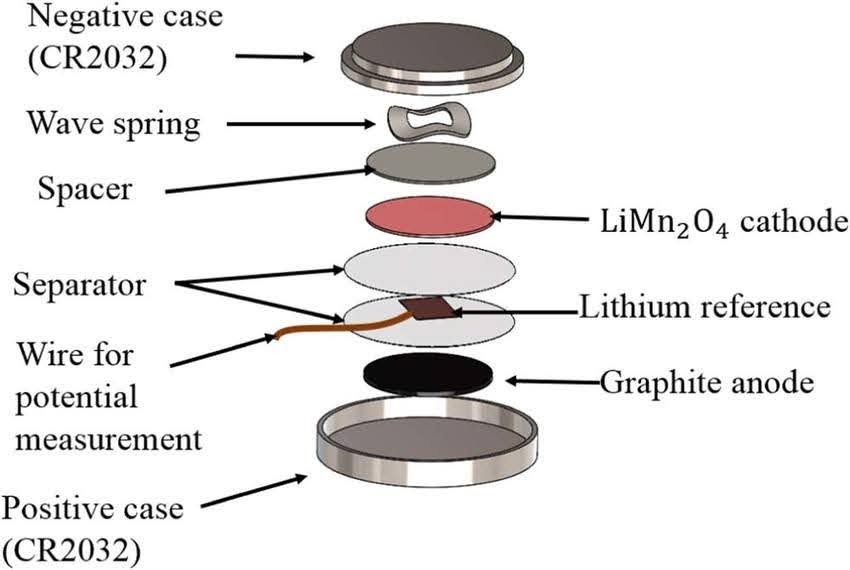Button batteries—also known as coin cell batteries—may be small, but they power millions of devices we rely on daily. From wristwatches and hearing aids to calculators, key fobs, and medical instruments, these compact power sources are essential for modern portable electronics. In this comprehensive guide, you’ll learn how button batteries work, how to read their codes, what types exist, and how to choose the right one for your device.
What Is a Button Battery?
A button battery is a small, round, flat cell designed to deliver steady voltage over a long period. Their compact form, lightweight design, and reliability make them ideal for small electronics where space is limited.
Inside a Button Battery: Key Components
Each button battery is a carefully engineered system consisting of several vital parts:
- Cathode (+): The positive terminal made from materials like manganese dioxide, silver oxide, or zinc-air, depending on the battery type.
- Anode (-): The negative terminal, typically made of lithium or zinc, reacts with the cathode to generate electricity.
- Electrolyte: The ion-conducting medium that facilitates electron flow between the anode and cathode.
- Separator: A thin insulating layer that prevents short circuits while allowing ion transfer.
- Outer Casing: Usually stainless steel, this protects the internal components and serves as one of the terminals.
How Button Batteries Work
Button batteries operate via an electrochemical reaction. When connected to a circuit, electrons move from the anode to the cathode through the external device, generating a continuous power supply. The materials used inside the battery determine its voltage, lifespan, and overall performance.
How Button Battery Naming Works
The naming convention for button batteries follows an international standard that reveals essential details such as size, shape, and chemistry.
Take the CR2032 battery, for example:
- C – Chemistry type: lithium manganese dioxide
- R – Shape: round (coin-type)
- 20 – Diameter in millimeters (20 mm)
- 32 – Thickness in tenths of a millimeter (3.2 mm)
This simple system allows users to easily identify compatible replacements. For instance, SR44 and LR44 follow the same logic, where “S” represents silver oxide and “L” stands for alkaline.
Common Button Battery Examples
| Code | Diameter (mm) | Thickness (mm) | Chemistry | Typical Use |
|---|---|---|---|---|
| CR2032 | 20 | 3.2 | Lithium | Watches, key fobs, fitness trackers |
| SR626SW | 6.8 | 2.6 | Silver Oxide | Medical instruments, cameras |
| LR44 | 11.6 | 5.4 | Alkaline | Toys, remotes, flashlights |
| PR44 | 11.6 | 5.4 | Zinc-Air | Hearing aids |
Types of Button Batteries
Button batteries come in multiple chemical compositions—each offering unique performance characteristics for specific applications.
1. Lithium Button Batteries
- Voltage: 3V
- Best For: Key fobs, calculators, and fitness trackers
- Advantages: High energy density, long shelf life, performs well in extreme temperatures
2. Silver Oxide Button Batteries
- Voltage: 1.55V
- Best For: Medical devices, watches, and cameras
- Advantages: High capacity, stable output, excellent for precision instruments
3. Alkaline Button Batteries
- Voltage: 1.5V
- Best For: Toys, remotes, and small lights
- Advantages: Economical and widely available
4. Zinc-Air Button Batteries
- Voltage: 1.4V
- Best For: Hearing aids and auditory devices
- Advantages: Lightweight, environmentally friendly, and offers excellent energy density
Button Battery Size Chart
Size matters when selecting the correct button battery. The standardized naming convention makes it easy to determine a battery’s dimensions and chemistry.
| Battery Code | Diameter (mm) | Thickness (mm) | Chemistry |
|---|---|---|---|
| CR2032 | 20 | 3.2 | Lithium |
| CR2025 | 20 | 2.5 | Lithium |
| SR626SW | 6.8 | 2.6 | Silver Oxide |
| LR44 | 11.6 | 5.4 | Alkaline |
| PR44 | 11.6 | 5.4 | Zinc-Air |
When replacing a battery, always match both the code and voltage to avoid compatibility issues or potential device damage.
Understanding Button Battery Voltage
Each chemistry type delivers a different voltage level:
- Lithium: 3V – high power output
- Silver Oxide: 1.55V – consistent, stable voltage
- Alkaline: 1.5V – suitable for moderate power needs
- Zinc-Air: 1.4V – optimized for hearing aids
Voltage compatibility is essential. Using the wrong voltage may cause malfunction or damage to sensitive electronics.
Identifying Positive and Negative Terminals
Knowing which side is positive or negative ensures proper installation:
- Markings: Most button batteries have a “+” sign on the positive terminal.
- Physical Appearance: The positive side is the larger, slightly raised surface; the flat side is negative.
- Multimeter Test: If unclear, test with a multimeter—positive readings correspond to the “+” terminal.
Are Button Batteries Rechargeable?
While most button batteries are non-rechargeable, rechargeable options are becoming more popular thanks to environmental advances.
Non-Rechargeable Button Batteries
- Common Types: Alkaline, silver oxide, zinc-air
- Best For: Low-drain devices such as remotes and toys
- Key Benefit: Reliable, inexpensive, and long-lasting for single-use applications
Rechargeable Button Batteries
- Chemistry: Typically lithium-ion (Li-ion)
- Used In: Medical devices, fitness trackers, hearing aids
- Advantages: Eco-friendly, cost-effective over time, and reusable
Rechargeable versions help reduce waste and provide a sustainable alternative, though they often come at a higher initial cost.
Final Thoughts
Button batteries may be tiny, but their impact on modern electronics is immense. Understanding button battery sizes, voltages, and naming conventions ensures your devices operate efficiently and safely. Whether you’re replacing a CR2032 in your smartwatch or a PR44 in your hearing aid, knowing the correct specifications saves time, money, and potential device damage.
